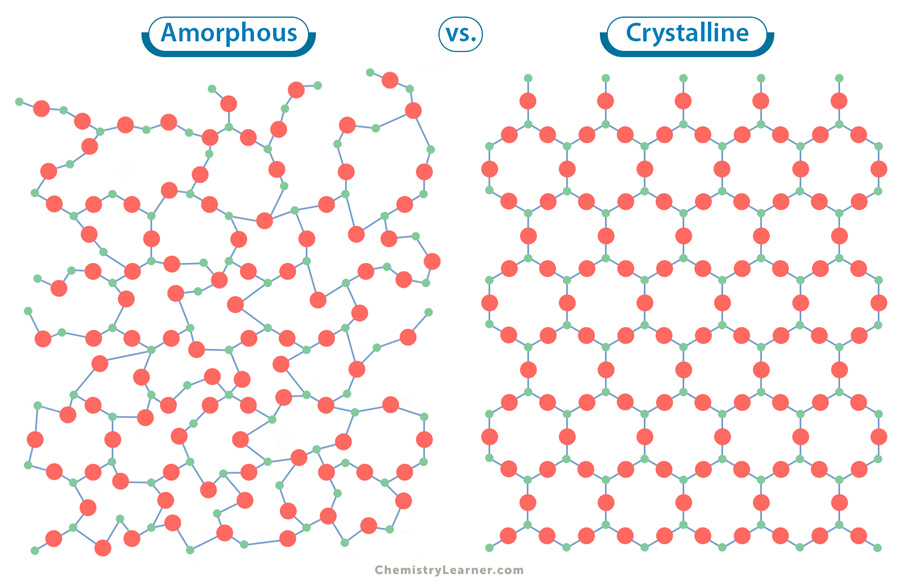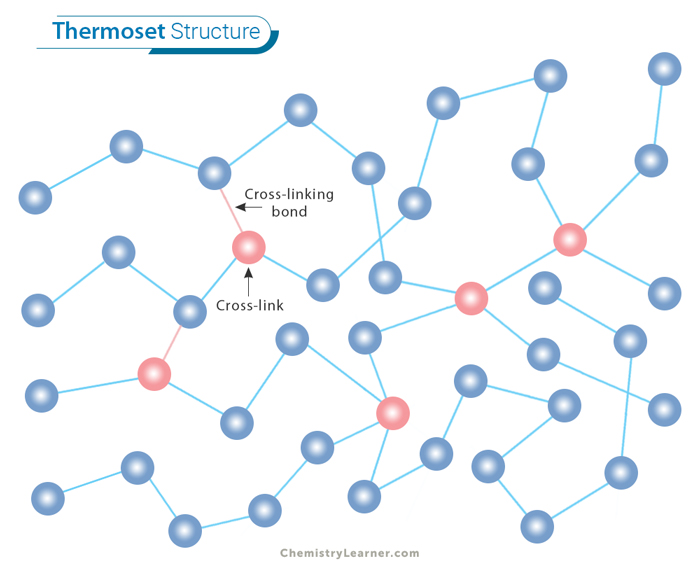Amorphous Polymers
Amorphous polymers constitute a class of polymeric materials distinguished by their unique molecular structure and physical properties. Unlike their crystalline counterparts, amorphous polymers lack a well-defined, ordered arrangement of polymer chains, resulting in a disordered, random structure. This absence of a distinct crystalline pattern imparts distinctive characteristics to amorphous polymers, such as transparency, flexibility, and a glassy or rubbery state, depending on temperature. These polymers are pivotal in various industrial applications, from packaging materials and optical devices to drug delivery systems and biomaterials. [1-4]
Properties
Amorphous polymers exhibit unique properties that distinguish them from their crystalline counterparts. [1-4]
1. Lack of Crystallinity: Amorphous polymers do not exhibit a regular, repeating crystalline structure.
2. Transparency: Many amorphous polymers are transparent or translucent, allowing optical clarity.
3. Softness and Flexibility: Amorphous polymers are often softer and more flexible than crystalline polymers.
4. Glass Transition Temperature: Amorphous polymers typically have a broader range of glass transition temperatures, allowing for various applications over different temperature ranges.
5. Improved Impact Resistance: The lack of crystalline regions can improve impact resistance in amorphous polymers.
6. Non-Uniform Mechanical Properties: Mechanical properties can vary throughout the material due to the absence of a consistent crystalline structure.
Examples and Applications
Amorphous polymers lack a defined crystalline structure, making them versatile and adaptable for various applications. [1-4]
1. Polymethyl methacrylate (PMMA) or Acrylic: PMMA is a clear and brittle amorphous polymer often used as a glass substitute in products like optical lenses, signs, and lighting fixtures. It is known for its optical transparency.
2. Polyvinyl Chloride (PVC): PVC can be amorphous and crystalline. The amorphous version is often used in flexible applications such as inflatable structures, flexible tubing, and clothing.
3. Polycarbonate (PC): PC is a transparent and impact-resistant amorphous polymer used in eyewear lenses, electronic components, and medical devices. It offers high strength and optical clarity.
Challenges and Innovations in Amophrous Polymer Research
Researchers face challenges characterizing the structure and properties of amorphous polymers due to their disordered nature. Innovations in analytical techniques, such as advanced spectroscopy and microscopy, are helping scientists gain deeper insights into these materials at the molecular level. [1]
Future trends in polymer science for non-crystalline materials point towards novel synthesis methods, tailored processing techniques, and enhanced performance through material design. By overcoming challenges and embracing innovations, researchers can unlock the full potential of amorphous polymer research for a wide range of applications.
Amorphous vs. Crystalline Polymers
Here is a table highlighting the main differences between amorphous and crystalline polymers: [1-4]
| Characteristic | Amorphous Polymers | Crystalline Polymers |
|---|---|---|
| Molecular Arrangement | Random and disordered | Regular and ordered |
| Packing of Chains | No specific packing pattern | Well-defined packing pattern |
| Transparency | Typically transparent | It can be transparent or opaque |
| Melting Point | Broad melting range | Sharp melting point |
| Tensile Strength | Generally lower | Generally higher |
| Density | Lower density | Higher density |
| Thermal Stability | Lower thermal stability | Higher thermal stability |
| Processing | Easier to process | More challenging to process |
| Mechanical Properties | More flexible and ductile | More rigid and brittle |
| Examples | ABS, PMMA | Polyethylene, Polypropylene |






